Object Identification Based on Extended State Observer on Artificial Cat Whiskers
Abstract
1. Introduction
2. Design of the Bio-Mimetic Cat Whiskers
2.1. Internal Structure of the Cat Whisker
2.2. Manufacture of the Bio-Mimetic Whiskers
- Outer section: The main structure of the artificial whisker is constructed from 3D printing resin with an F69 from Resione, the company Dongguan Godsaid Technology Co., Ltd., Dongguan, Guangdong, China. This material possesses a Shore Hardness of 60–75 A that corresponds to a semi-flexible nature, allowing the whisker shape to remain intact even when collisions with the environment occur. A tensile strength of 7.9 MPa and a temperature range from 5 °C to 120 °C provide suitable characteristics for the application. These mechanical properties are the ones closest to the Keratin that composes cat whiskers in comparison to other commercial resins that can be used with 3D printing technology, particularly for the Shore Hardness coefficient, which provides a similar stiffness. The outer section is printed on a Phrozen Sonic Mighty 4K resin printer using a mm layer height, s exposure time per layer, and a post-printing process that includes washing with isopropyl alcohol and an additional curing process using a Wash and Cure station from Creality.
- Inner section: The material used in this section corresponds to Ecoflex 00-30 silicon from the Smooth-On Company, Macungie, PA, USA. This material provides a Shore Hardness of 00–30 that corresponds to soft and flexible materials, a tensile strength of 200 psi, and a useful temperature range from −53 °C to 232 °C that is suitable for the desired application. This material is selected based on its Shore Hardness, which provides flexibility similar to the inner material of cat whiskers. Other types of silicon, if their value is lower, dampen the transmission of vibrations, while a higher value reduces the flexibility of artificial cat whiskers. This material typically must be poured into a mold that allows the form to remain in it once it has cured. However, for this application, the material is poured directly onto the inner section from the artificial whiskers to fill it.
3. Robotic System for Object Identification
3.1. Motion Range of the Cat Whisker
- Auditory stimulus: A recording of meowing cat kittens is played at frequencies between 100 and 400 Hz to induce an alert in the experimental subjects as they try to identify the source of the noise. This process includes reorienting from the whiskers to sense the environment, as shown in Figure 4a.
- Olfactory stimulus: Two sets of olfactory stimuli are applied. The first one corresponds to wet food that is placed in a bowl to be consumed by the cat, and the orientation of the whiskers is noted when they interact with a food source, as shown in Figure 4b. The second stimulus corresponds to catnip in spray form, which is dispersed over the experimental area, allowing for the identification of motion from the cat whiskers during a relaxation stage.
- Contact stimulus: A set of objects is placed in the experimental area to identify how the whiskers are used to explore the environment. The first element corresponds to a box with a 20 cm diameter hole that the subjects use to exit. It is expected that this part allows for the study of the motion of the whiskers on cats in closed environments, as shown in Figure 4c. The second element corresponds to a scratching post and a remote-controlled mouse to analyze how the cats interact with them using their whiskers.
- 1.
- Cleaning and sterilization are necessary to eliminate all odors that could modify the behavior of the test subjects.
- 2.
- A closed environment using the box with a circular exit to visualize the whisker behavior in narrow spaces.
- 3.
- Food combines dry and wet foods to enhance olfactory stimuli.
- 4.
- Audio activation occurs when the auditory stimulus is presented to verify how the test subject reacts.
- 5.
- Interaction test: This combines the contact stimulus from toys and scratches with the olfactory stimulus from the catnip to analyze the motion of the whiskers.
- Rotational motion lower bound: ;
- Rotational motion upper bound: ;
- Translational motion lower bound: cm;
- Translational motion upper bound: cm.
3.2. Manufacture of the Robotic System
4. Methodology of Object Identification Using Extended State Observer
4.1. Extended State Observer for Disturbance Estimation
4.2. Frequency Analysis of the Disturbance and Classification for Object Identification
5. Results
- Class 1, Soft material: The testing of this kind of material is composed of 180 samples performed on foam rubber and 180 samples performed on sponge.
- Class 2, Hard Material: The testing of this kind of material is composed of 180 samples conducted on aluminum and 180 samples conducted on wood.
- Support Vector Machine
- –
- Class 1: 25 correct classifications out of 40 tests.
- –
- Class 2: 32 classifications out of 40 tests.
- –
- Out of the total 80 tests conducted, there were 57 correct classifications.
- –
- Classifier effectiveness percentage: 71.25%
- Random Forest
- –
- Class 1: 28 correct classifications out of 40 tests.
- –
- Class 2: 24 correct classifications out of 40 tests.
- –
- Out of the total 80 tests conducted, there were 52 correct classifications.
- –
- Classifier effectiveness percentage: 65%
6. Conclusions
- To emulate cat whiskers requires implementing the two sections that compose them using two materials with different mechanical properties. The use of flexible polymers ensures that the whiskers are not damaged by collisions with objects.
- The motion of cat whiskers can be replicated by the combination of a linear and a rotational mechanism that allows for the emulation of the range of movement that cats perform under different stimuli.
- The physical implementation of the mechanism requires the application of a controller that allows for the performance of a tracking process that emulates the motion of cat whiskers with a soft trajectory, which can be implemented using Bezier polynomials.
- The energy consumption of the robotic system during the sensing process needs to be estimated, considering the time lapse generated by the collision, to ensure that the application in real-world scenarios is feasible without exhausting the energy from the power source.
- The implementation of an ESO allows for the estimation of the perturbation on the servomechanism to identify the effect applied to the gear mechanism of the DC motor when a collision with an object in respect to the whiskers occurs.
- The computation of the gains from the ESO requires assurance that the designated poles allow for a sufficiently fast speed response to reach the observation from the desired state. However, it is required to avoid increasing their values without a bound because the peaking phenomenon could be observed, especially during the collision of the whiskers.
- The evaluation of the frequency response on the perturbation estimation shows different behavior based on the type of material that collides with the whiskers. This can be especially noted in the amplitude of the frequencies of the disturbance computed with the FFT.
- The implementation of an RF algorithm and an SVM provides a feasible way to classify the frequency data generated by the collision to identify the material; the latter provides better performance in this task. However, the implementations from other classes of classifiers must be evaluated in future work to improve performance.
Future Work
- The analysis of the motion of the cat whiskers requires an increase in the sample population to enhance accuracy and feasibility, taking into account the difficulties faced by the cats in completing the study. The increase in the accuracy of the motion range estimation that the robotic system must achieve ensures an emulation of the biological process of cat whiskers.
- The evaluation of other materials to implement the artificial cat whiskers must be conducted to enhance the similarity of their mechanical properties to those of biological whiskers.
- The mechanism can be improved by modifying it to ensure that the range of motion corresponds to the one generated by the cats. The speed of the system can be increased to reduce the time required for the identification process while simultaneously decreasing the energy consumed by the robotic system.
- The evaluation of other classification algorithms must be conducted to increase the accuracy of material identification and the classifier effectiveness percentage.
Author Contributions
Funding
Institutional Review Board Statement
Data Availability Statement
Acknowledgments
Conflicts of Interest
References
- Khattak, S.; Nguyen, H.; Mascarich, F.; Dang, T.; Alexis, K. Complementary multi–modal sensor fusion for resilient robot pose estimation in subterranean environments. In Proceedings of the 2020 International Conference on Unmanned Aircraft Systems (ICUAS), Athens, Greece, 1–4 September 2020; IEEE: New York, NY, USA, 2020; pp. 1024–1029. [Google Scholar] [CrossRef]
- Li, Z.; Liu, F.; Yang, W.; Peng, S.; Zhou, J. A survey of convolutional neural networks: Analysis, applications, and prospects. IEEE Trans. Neural Netw. Learn. Syst. 2021, 33, 6999–7019. [Google Scholar] [CrossRef] [PubMed]
- Nisar, M.A.; Ross, K.E.; Brown, M.H.; Bentham, R.; Whiley, H. Water stagnation and flow obstruction reduces the quality of potable water and increases the risk of legionelloses. Front. Environ. Sci. 2020, 8, 611611. [Google Scholar] [CrossRef]
- Islas-García, E.; Ceccarelli, M.; Tapia-Herrera, R.; Torres-SanMiguel, C.R. Pipeline inspection tests using a biomimetic robot. Biomimetics 2021, 6, 17. [Google Scholar] [CrossRef] [PubMed]
- Macario Barros, A.; Michel, M.; Moline, Y.; Corre, G.; Carrel, F. A comprehensive survey of visual slam algorithms. Robotics 2022, 11, 24. [Google Scholar] [CrossRef]
- Huang, L. Review on LiDAR-based SLAM techniques. In Proceedings of the 2021 International Conference on Signal Processing and Machine Learning (CONF-SPML), Beijing, China, 18–20 August 2021; IEEE: New York, NY, USA, 2021; pp. 163–168. [Google Scholar] [CrossRef]
- Bagga, P.J.; Makhesana, M.A.; Patel, K.; Patel, K.M. Tool wear monitoring in turning using image processing techniques. Mater. Today Proc. 2021, 44, 771–775. [Google Scholar] [CrossRef]
- Ercetin, A.; Der, O.; Akkoyun, F.; Gowdru Chandrashekarappa, M.P.; Şener, R.; Çalışan, M.; Olgun, N.; Chate, G.; Bharath, K.N. Review of image processing methods for surface and tool condition assessments in machining. J. Manuf. Mater. Process. 2024, 8, 244. [Google Scholar] [CrossRef]
- Wang, X.; Lin, M.; Li, J.; Tong, J.; Huang, X.; Liang, L.; Fan, Z.; Liu, Y. Ultrasonic guided wave imaging with deep learning: Applications in corrosion mapping. Mech. Syst. Signal Process. 2022, 169, 108761. [Google Scholar] [CrossRef]
- Yuan, S.; Wu, J.; Luan, F.; Zhang, L.; Lv, J. Improvement of Strong Tracking UKF-SLAM Approach using Three-position Ultrasonic Detection. Robot. Auton. Syst. 2023, 159, 104305. [Google Scholar] [CrossRef]
- Cui, X.; Lu, C.; Wang, J. 3D semantic map construction using improved ORB-SLAM2 for mobile robot in edge computing environment. IEEE Access 2020, 8, 67179–67191. [Google Scholar] [CrossRef]
- Gunatilake, A.; Piyathilaka, L.; Tran, A.; Vishwanathan, V.K.; Thiyagarajan, K.; Kodagoda, S. Stereo vision combined with laser profiling for mapping of pipeline internal defects. IEEE Sens. J. 2020, 21, 11926–11934. [Google Scholar] [CrossRef]
- Yin, J.; Li, A.; Li, T.; Yu, W.; Zou, D. M2dgr: A multi-sensor and multi-scenario slam dataset for ground robots. IEEE Robot. Autom. Lett. 2021, 7, 2266–2273. [Google Scholar] [CrossRef]
- Yu, H.; Yang, L.T.; Zhang, Q.; Armstrong, D.; Deen, M.J. Convolutional neural networks for medical image analysis: State-of-the-art, comparisons, improvement and perspectives. Neurocomputing 2021, 444, 92–110. [Google Scholar] [CrossRef]
- Ma, W.; Tu, X.; Luo, B.; Wang, G. Semantic clustering based deduction learning for image recognition and classification. Pattern Recognit. 2022, 124, 108440. [Google Scholar] [CrossRef]
- Wang, K.; Liu, M. YOLO-Anti: YOLO-based counterattack model for unseen congested object detection. Pattern Recognit. 2022, 131, 108814. [Google Scholar] [CrossRef]
- Liu, Y.; Sun, P.; Wergeles, N.; Shang, Y. A survey and performance evaluation of deep learning methods for small object detection. Expert Syst. Appl. 2021, 172, 114602. [Google Scholar] [CrossRef]
- Ivleva, N.P. Chemical analysis of microplastics and nanoplastics: Challenges, advanced methods, and perspectives. Chem. Rev. 2021, 121, 11886–11936. [Google Scholar] [CrossRef]
- Choudhary, K.; DeCost, B.; Chen, C.; Jain, A.; Tavazza, F.; Cohn, R.; Park, C.W.; Choudhary, A.; Agrawal, A.; Billinge, S.J.; et al. Recent advances and applications of deep learning methods in materials science. npj Comput. Mater. 2022, 8, 59. [Google Scholar] [CrossRef]
- Slovak, J.E.; Foster, T.E. Evaluation of whisker stress in cats. J. Feline Med. Surg. 2021, 23, 389–392. [Google Scholar] [CrossRef]
- Sayegh, M.A.; Daraghma, H.; Mekid, S.; Bashmal, S. Review of recent bio-inspired design and manufacturing of whisker tactile sensors. Sensors 2022, 22, 2705. [Google Scholar] [CrossRef]
- Yu, Z.; Guo, Y.; Su, J.; Huang, Q.; Fukuda, T.; Cao, C.; Shi, Q. Bioinspired, multifunctional, active whisker sensors for tactile sensing of mobile robots. IEEE Robot. Autom. Lett. 2022, 7, 9565–9572. [Google Scholar] [CrossRef]
- Liu, J.; Xu, P.; Zheng, J.; Liu, X.; Wang, X.; Wang, S.; Guan, T.; Xie, G.; Xu, M. Whisker-inspired and self-powered triboelectric sensor for underwater obstacle detection and collision avoidance. Nano Energy 2022, 101, 107633. [Google Scholar] [CrossRef]
- Hou, X.; Xin, L.; Fu, Y.; Na, Z.; Gao, G.; Liu, Y.; Xu, Q.; Zhao, P.; Yan, G.; Su, Y.; et al. A self-powered biomimetic mouse whisker sensor (BMWS) aiming at terrestrial and space objects perception. Nano Energy 2023, 118, 109034. [Google Scholar] [CrossRef]
- Kim, S.; Kubicek, R.; Paris, A.; Tagliabue, A.; How, J.P.; Bergbreiter, S. A whisker-inspired fin sensor for multi-directional airflow sensing. In Proceedings of the 2020 IEEE/RSJ International Conference on Intelligent Robots and Systems (IROS), Las Vegas, NV, USA, 25–29 October 2020; IEEE: New York, NY, USA, 2020; pp. 1330–1337. [Google Scholar] [CrossRef]
- Liu, G.; Jiang, Y.; Wu, P.; Ma, Z.; Chen, H.; Zhang, D. Artificial whisker sensor with undulated morphology and self-spread piezoresistors for diverse flow analyses. Soft Robot. 2023, 10, 97–105. [Google Scholar] [CrossRef] [PubMed]
- Ho, C.M.; Tran, D.T.; Ahn, K.K. Adaptive sliding mode control based nonlinear disturbance observer for active suspension with pneumatic spring. J. Sound Vib. 2021, 509, 116241. [Google Scholar] [CrossRef]
- Li, Y.; Li, Y.; Zhu, M.; Xu, Z.; Mu, D. A nonlinear momentum observer for sensorless robot collision detection under model uncertainties. Mechatronics 2021, 78, 102603. [Google Scholar] [CrossRef]
- Li, S.; Shi, D.; Lou, Y.; Zou, W.; Shi, L. Generalized multikernel maximum correntropy Kalman filter for disturbance estimation. IEEE Trans. Autom. Control 2023, 69, 3732–3747. [Google Scholar] [CrossRef]
- Xiong, S.; Wang, W.; Liu, X.; Chen, Z.; Wang, S. A novel extended state observer. ISA Trans. 2015, 58, 309–317. [Google Scholar] [CrossRef]
- Grant, R.A.; Goss, V.G. What can whiskers tell us about mammalian evolution, behaviour, and ecology? Mammal Rev. 2022, 52, 148–163. [Google Scholar] [CrossRef]
- Spong, M.W.; Hutchinson, S.; Vidyasagar, M. Robot Modeling and Control; John Wiley: Hoboken, NJ, USA, 2020. [Google Scholar] [CrossRef]
- Sira-Ramírez, H.; Luviano-Juárez, A.; Ramírez-Neria, M.; Zurita-Bustamante, E.W. Active Disturbance Rejection Control of Dynamic Systems: A Flatness Based Approach; Butterworth-Heinemann: Oxford, UK, 2017. [Google Scholar] [CrossRef]
- Henry, M. An ultra-precise fast Fourier transform. Measurement 2023, 220, 113372. [Google Scholar] [CrossRef]
- Teles, G.; Rodrigues, J.J.; Rabelo, R.A.; Kozlov, S.A. Comparative study of support vector machines and random forests machine learning algorithms on credit operation. Softw. Pract. Exp. 2021, 51, 2492–2500. [Google Scholar] [CrossRef]
- Bansal, M.; Goyal, A.; Choudhary, A. A comparative analysis of K-nearest neighbor, genetic, support vector machine, decision tree, and long short term memory algorithms in machine learning. Decis. Anal. J. 2022, 3, 100071. [Google Scholar] [CrossRef]
- Vos, K.; Peng, Z.; Jenkins, C.; Shahriar, M.R.; Borghesani, P.; Wang, W. Vibration-based anomaly detection using LSTM/SVM approaches. Mech. Syst. Signal Process. 2022, 169, 108752. [Google Scholar] [CrossRef]
- Iranzad, R.; Liu, X. A review of random forest-based feature selection methods for data science education and applications. Int. J. Data Sci. Anal. 2024, 20, 197–211. [Google Scholar] [CrossRef]
- Parmar, A.; Katariya, R.; Patel, V. A review on random forest: An ensemble classifier. In Proceedings of the International Conference on Intelligent Data Communication Technologies and Internet of Things (ICICI) 2018, Coimbatore, India, 7–8 August 2019; Springer: Berlin/Heidelberg, Germany, 2019; pp. 758–763. [Google Scholar] [CrossRef]
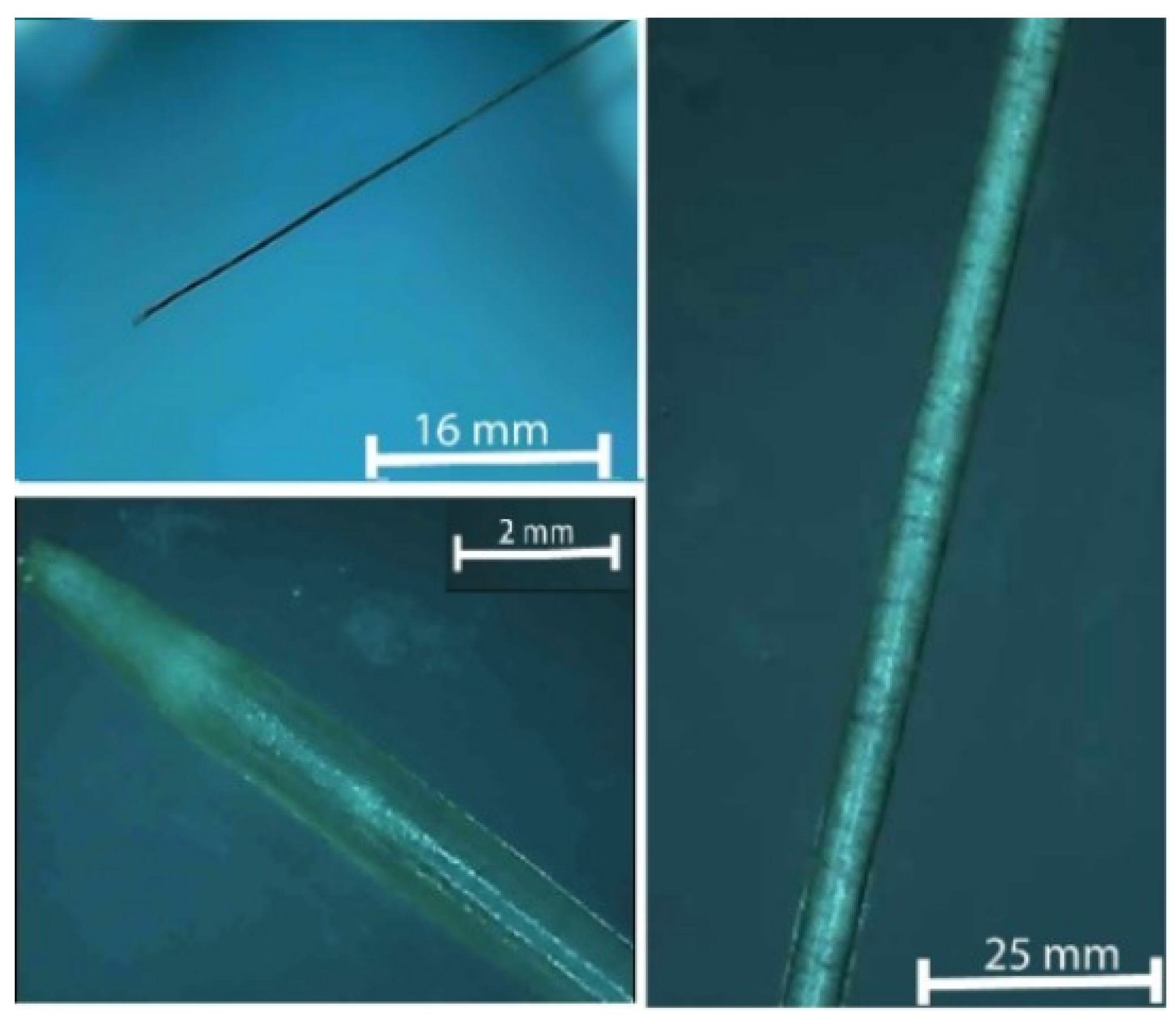
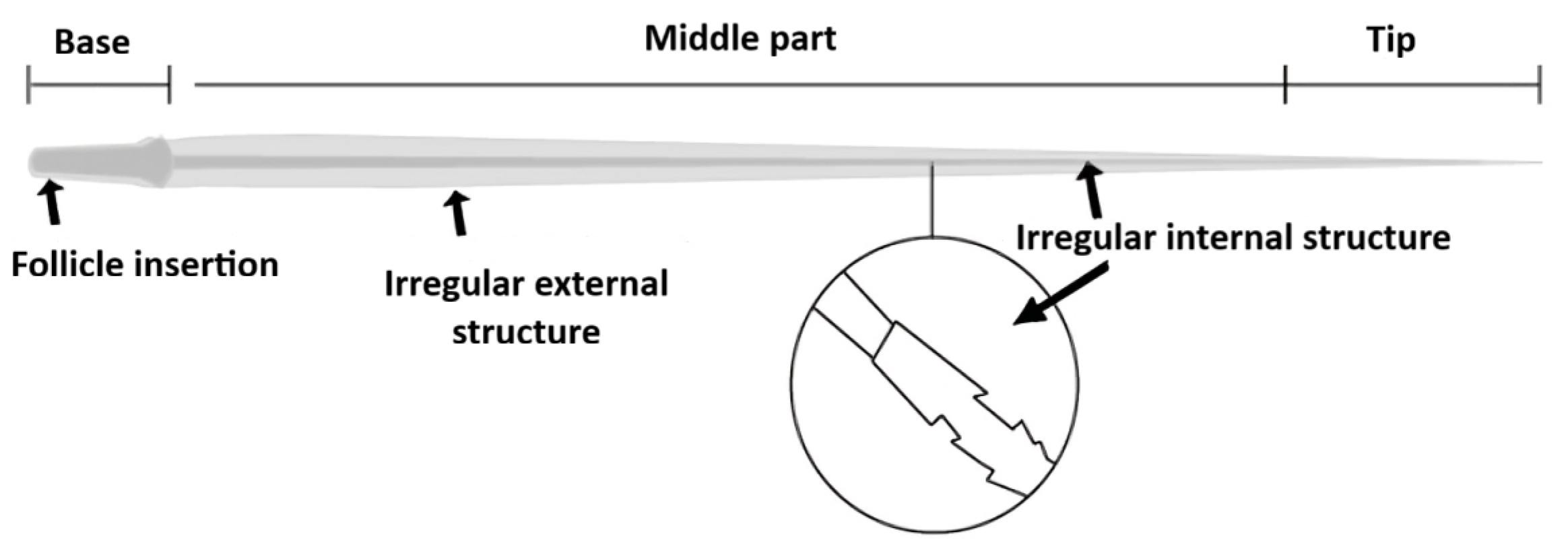
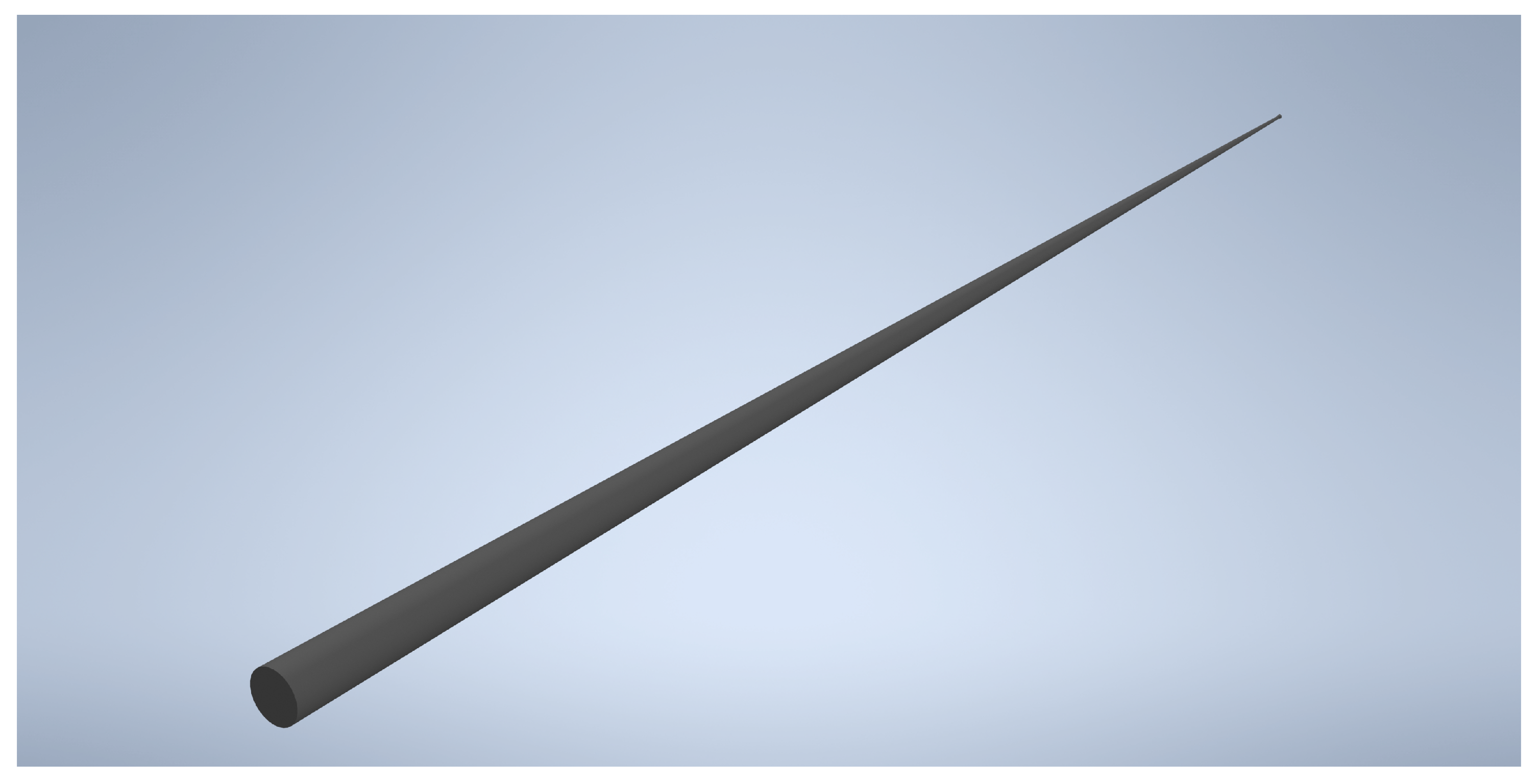
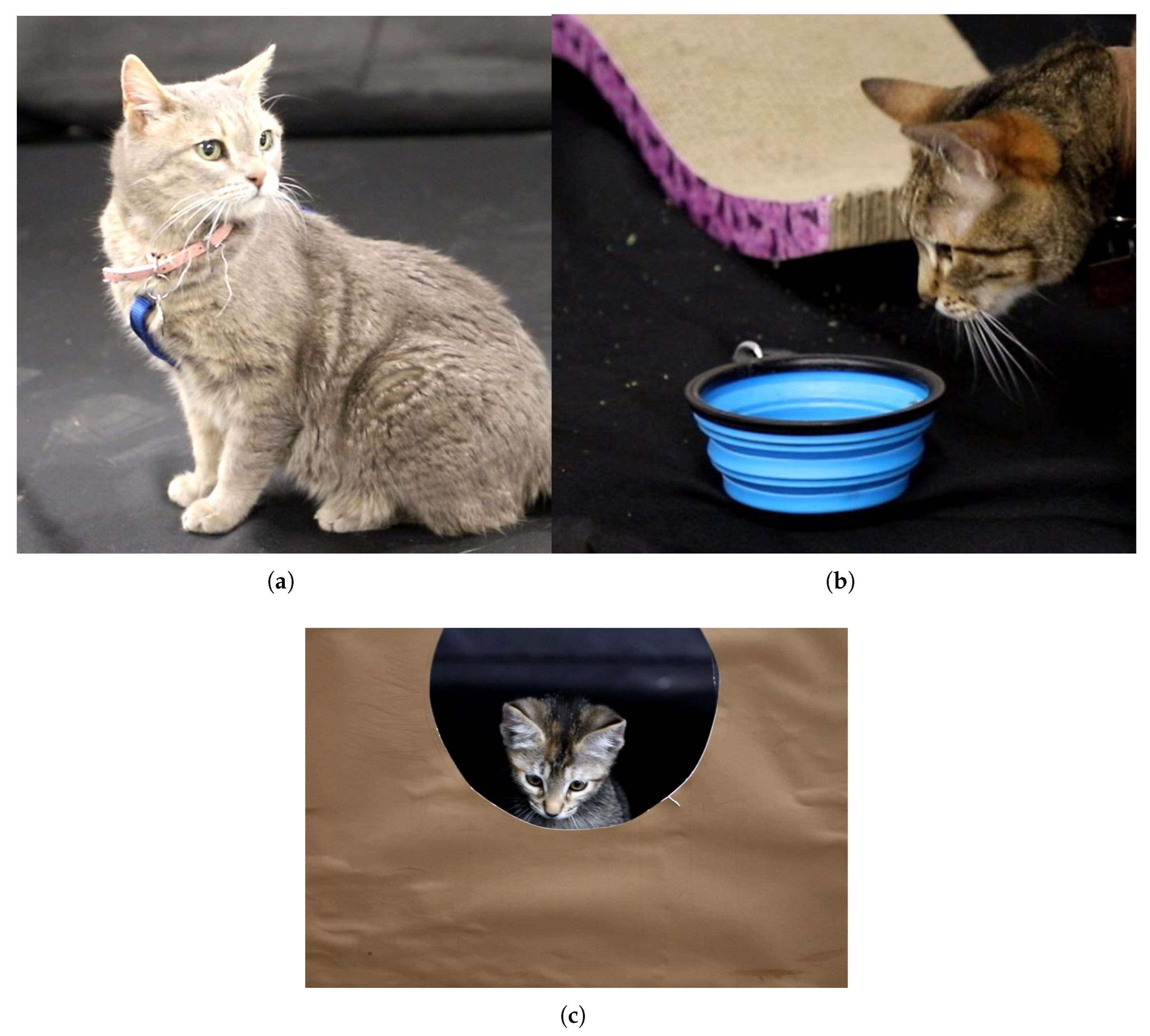
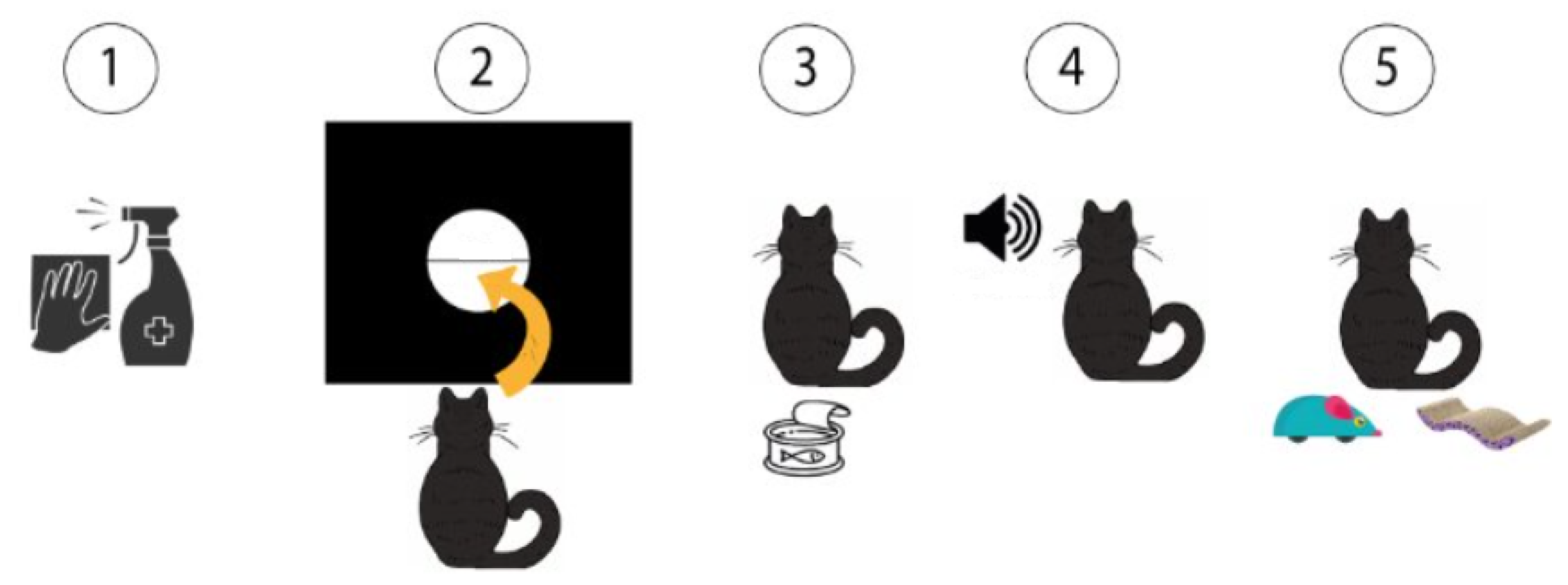





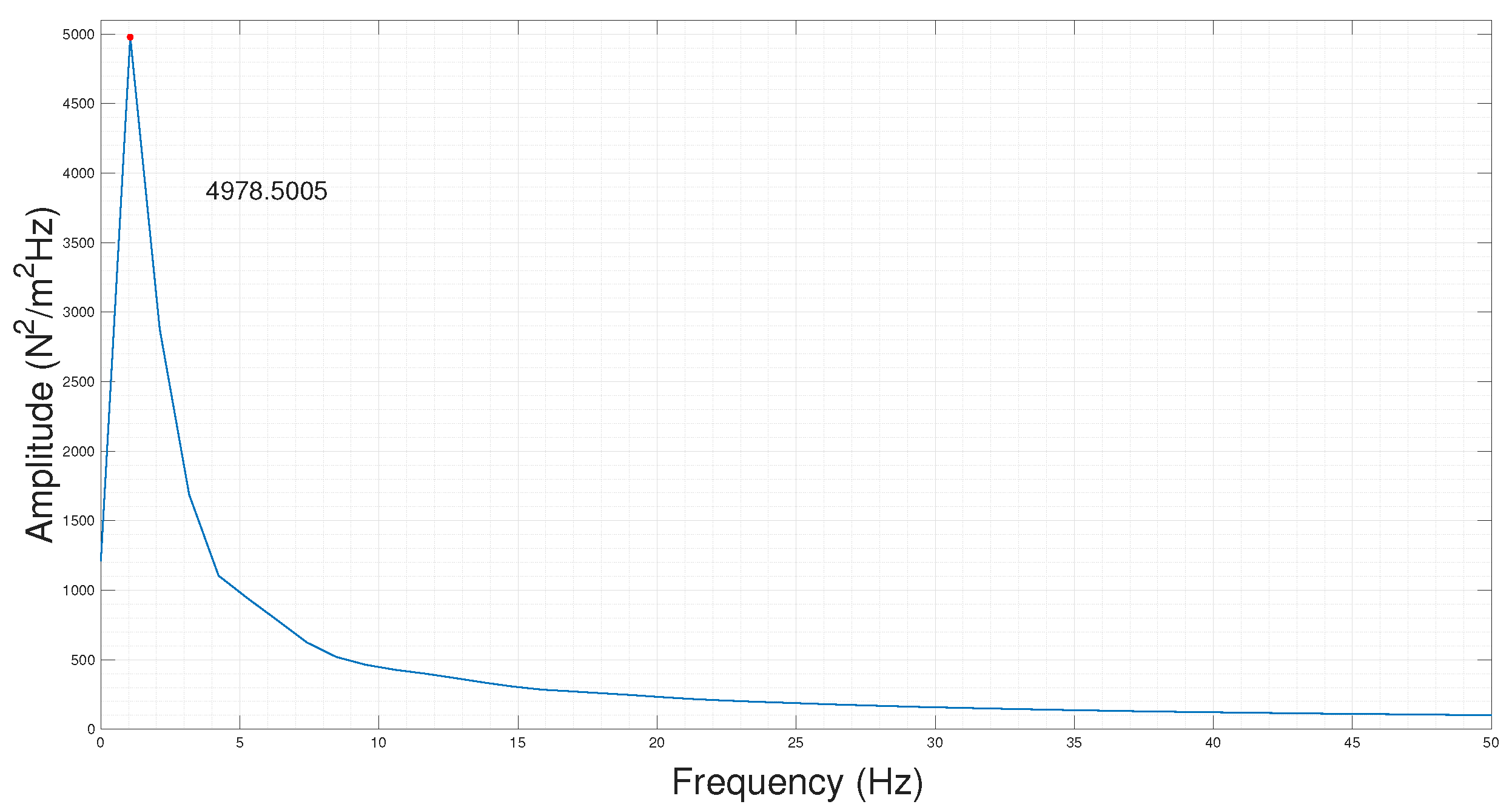
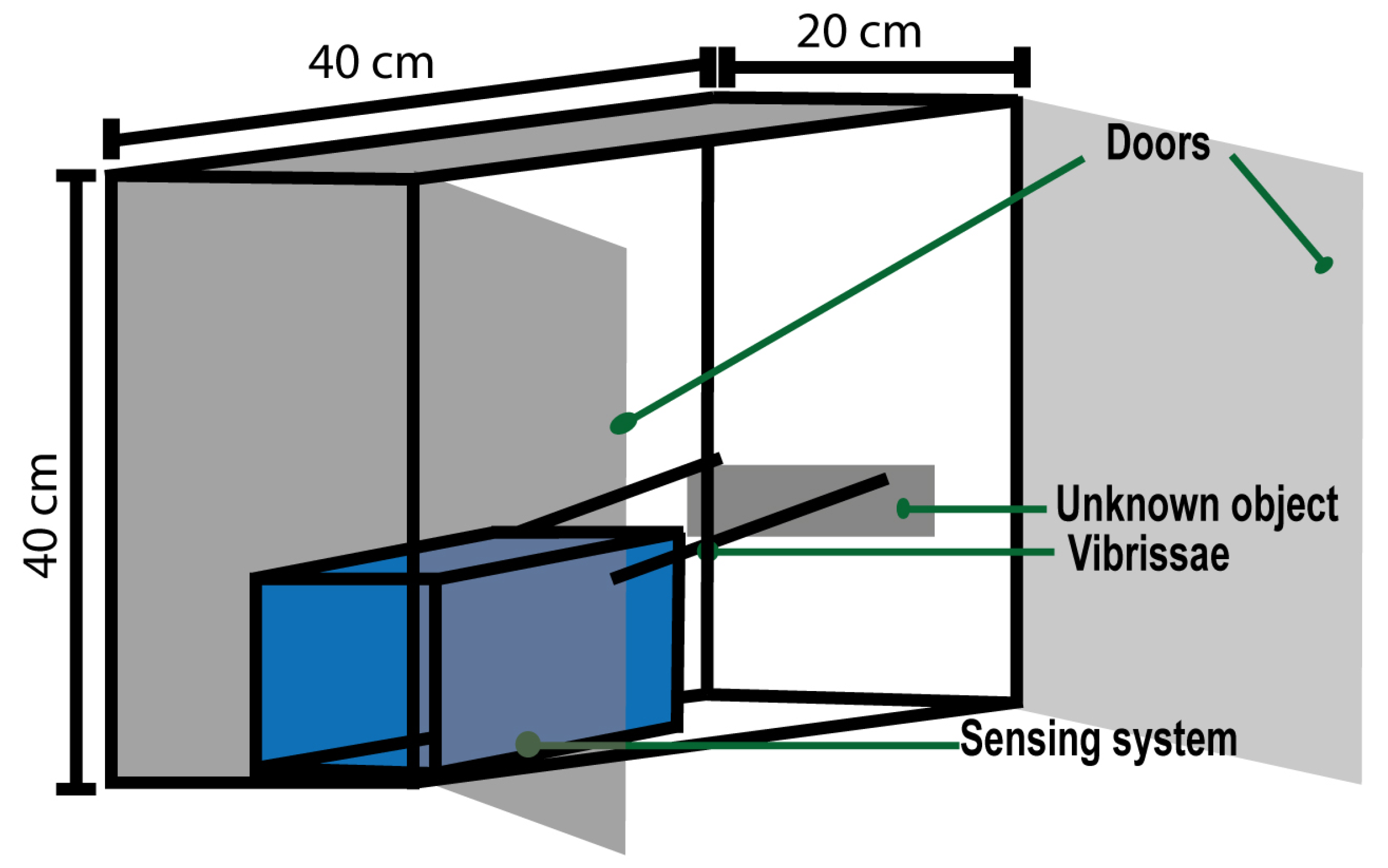
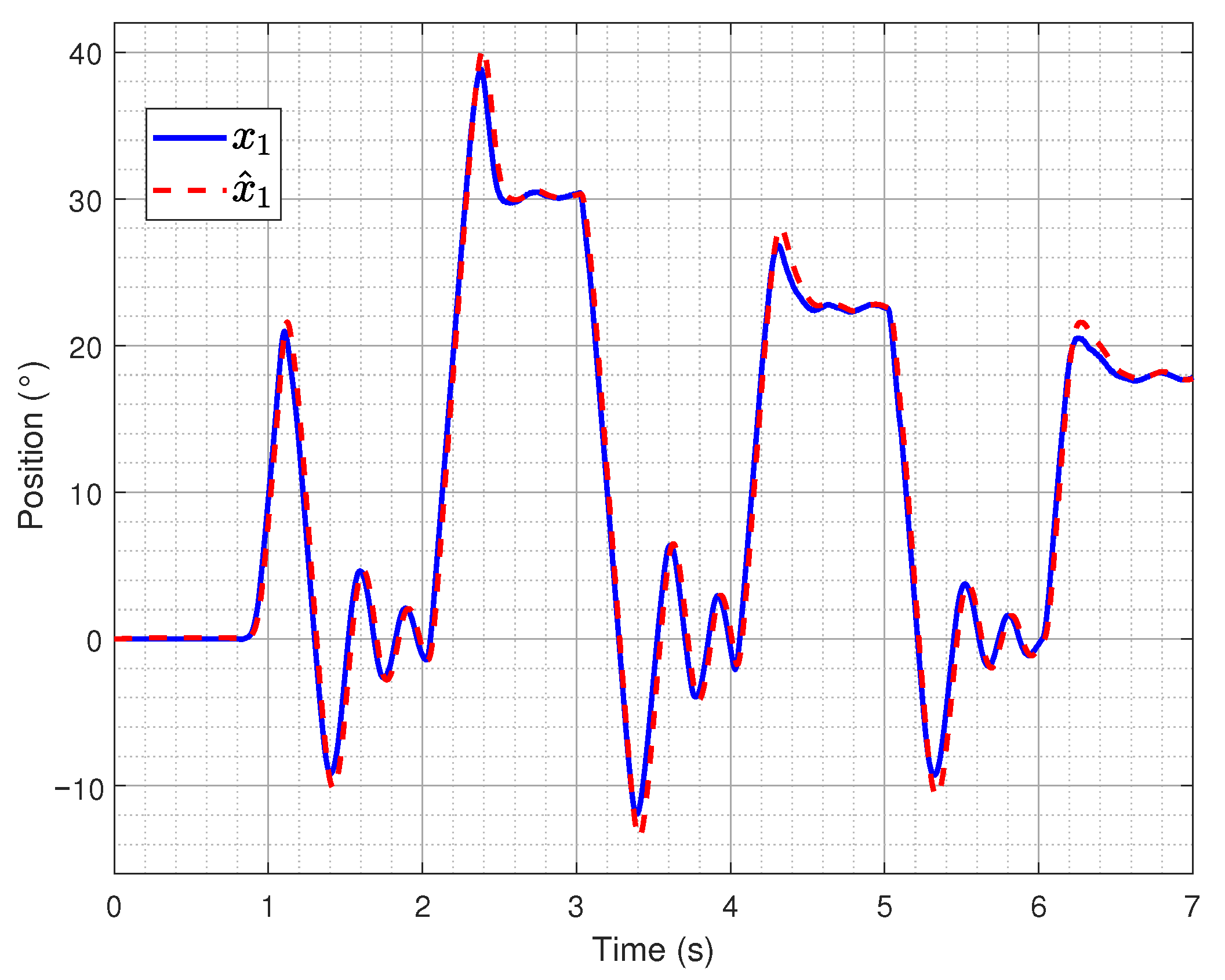
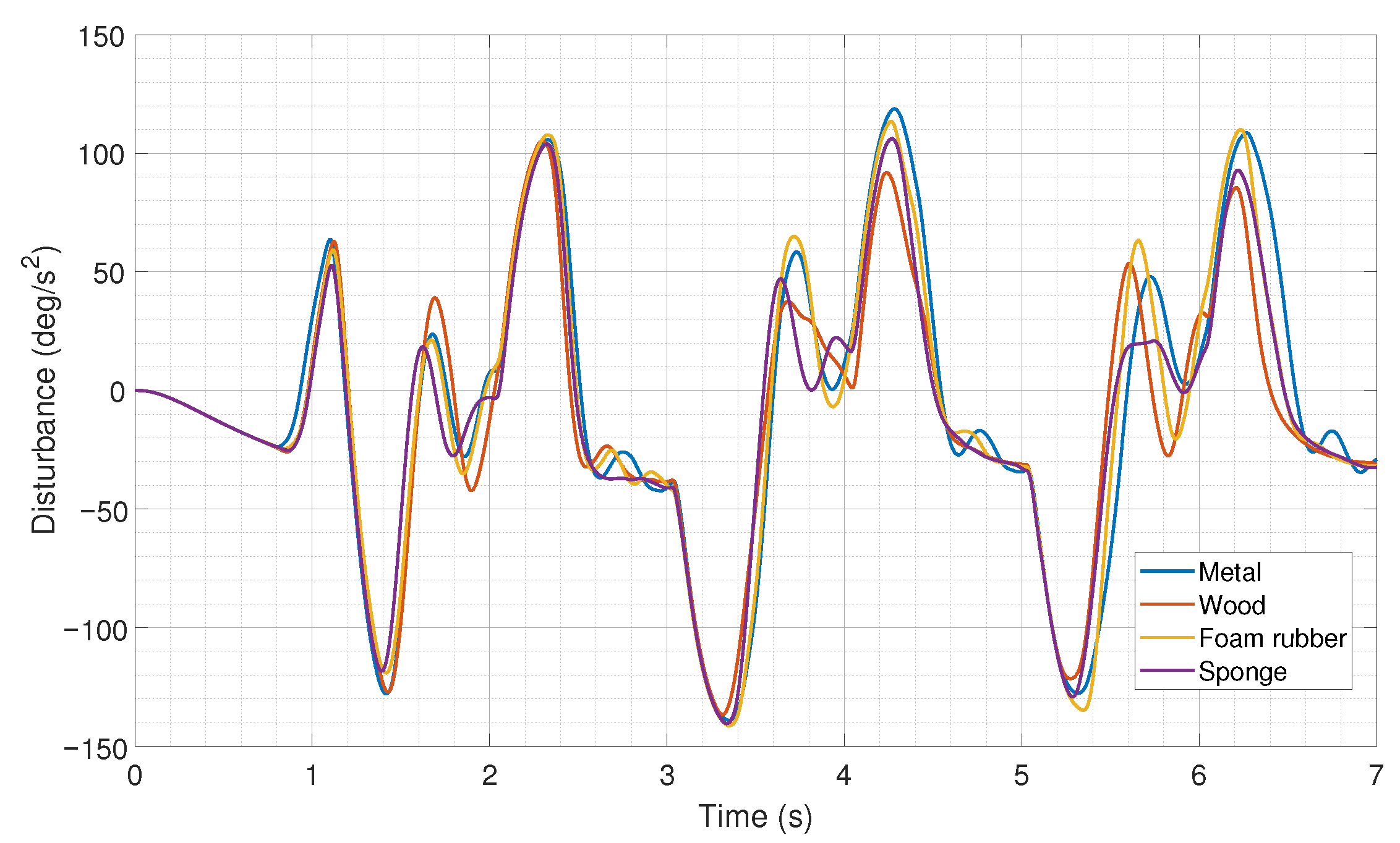

| Material | Frequency with Maximum Amplitude | Frequency with Minimum Amplitude |
|---|---|---|
| Metal | 4978.50 | 71.767 |
| Wood | 3689.23 | 69.660 |
| Sponge | 4171.71 | 69.560 |
| Foam rubber | 4482.92 | 41.153 |
| Lettuce leaves | 3825.90 | 52.781 |
| Polypropylene | 4645.25 | 65.284 |
Disclaimer/Publisher’s Note: The statements, opinions and data contained in all publications are solely those of the individual author(s) and contributor(s) and not of MDPI and/or the editor(s). MDPI and/or the editor(s) disclaim responsibility for any injury to people or property resulting from any ideas, methods, instructions or products referred to in the content. |
© 2025 by the authors. Licensee MDPI, Basel, Switzerland. This article is an open access article distributed under the terms and conditions of the Creative Commons Attribution (CC BY) license (https://creativecommons.org/licenses/by/4.0/).
Share and Cite
Cortez, R.; Galicia-Montoya, Y.; Cruz-Cambray, L.; Sandoval-Chileño, M.; Luviano-Juarez, A.; Lozada-Castillo, N.; Rincon-Martinez, K. Object Identification Based on Extended State Observer on Artificial Cat Whiskers. Processes 2025, 13, 3473. https://doi.org/10.3390/pr13113473
Cortez R, Galicia-Montoya Y, Cruz-Cambray L, Sandoval-Chileño M, Luviano-Juarez A, Lozada-Castillo N, Rincon-Martinez K. Object Identification Based on Extended State Observer on Artificial Cat Whiskers. Processes. 2025; 13(11):3473. https://doi.org/10.3390/pr13113473
Chicago/Turabian StyleCortez, Ricardo, Yessica Galicia-Montoya, Luis Cruz-Cambray, Marco Sandoval-Chileño, Alberto Luviano-Juarez, Norma Lozada-Castillo, and Karla Rincon-Martinez. 2025. "Object Identification Based on Extended State Observer on Artificial Cat Whiskers" Processes 13, no. 11: 3473. https://doi.org/10.3390/pr13113473
APA StyleCortez, R., Galicia-Montoya, Y., Cruz-Cambray, L., Sandoval-Chileño, M., Luviano-Juarez, A., Lozada-Castillo, N., & Rincon-Martinez, K. (2025). Object Identification Based on Extended State Observer on Artificial Cat Whiskers. Processes, 13(11), 3473. https://doi.org/10.3390/pr13113473






